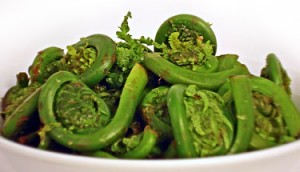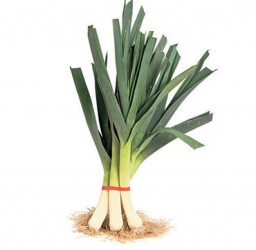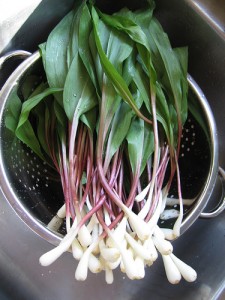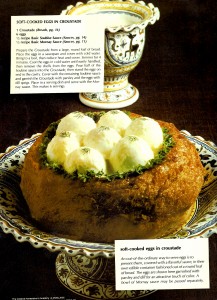
Food Around The Web
(via betterdesigned)
love your food v4.0
I am not a chef.
I am, however, married to a foodie and surrounded by people who love food.
Growing up on a farm, I was always aware of where my food came from; from the fields and from the animals. We had large vegetable gardens, and fields of wheat and corn, and cows that you didn’t name because someday they would be food.
Living in the city puts certain limits on what we can grow or raise for ourselves. This is part one of what I plan will be a series of posts on Urban Gardening. Taking your tiny slice of earth (or your deck, or your balcony) and using it to grow things.
We have a fairly large back yard by city standards. It has a narrow slice of land beside the garage, which would be totally useless except that it is the perfect spot for a vegetable garden. Vegetables need the sun to grow – and lots of it. This is absolutely essential. If you have access to a South facing plot of land that is where you should break ground. The ideal spot would never be shaded at all during midday, but if you have to choose, I would say that the West would be preferable for afternoon sun.
This weekend is THE date for planting in the garden. May 2-4. Drink beer – plant plants. Check. This year I did a combination of starting from seed and buying plants from the garden centre. Starting from seeds requires some serious commitment and needs to have been started about 2-3 months ago. There is so much information available on growing specific vegetables that I can only really make suggestions and give my own tips and tricks for those that I am growing this year. If you’re looking to start now I suggest starting with the basics listed below and/or follow this simple rule: Know what you like to eat and grow those things.
Tomatoes – Need lots of love and attention but are definitely worth it. There is nothing better than a vine-ripened tomato that is still warm from the sun. Nothing.
Lettuce – An exception to the seed rule. Can be started now in the garden. Sprinkle the seeds – keep it well watered. Serious bang for the buck.
Cucumber – Also fairly easy – takes up a fair bit of space though. Can be grown up a trellis like a vine to keep them off the ground and save space.
Herbs – Also very satisfying and fairly easy depending on what you choose. Basil, Rosemary, Oregano, Mint are always good choices.
Peas – Seeds need to be planted early as they need cool weather to germinate. It’s too late for that now, but I bought some plants that were already started and stuck them in the ground.
(I would also love to learn to grow fruit, but I’m not quite there yet. Something to experiment with in the future)
The main thing to keep in mind is that is it not difficult to grow your own veggies, but it takes time and commitment. You absolutely have to keep on top of the weeds, and make sure the plants are watered every day (unless it rains). Harvesting when ready is crucial as well. When planting items like tomatoes and herbs, you may want to keep some in pots and some in the garden. That gives you the flexibility of moving them around to the prime sunny spots and also a fallback in case the raccoons discover your garden.
My hope is that this series of posts will inspire you to grow something this seaso. Next up: posts on planting and growing specific veggies – starting with the awesome tomato and its best friend basil.
Happy long weekend!
I recently had the pleasure of visiting the market this last week, and was blessed with the bounty of spring in Ontario. I was inspired to make a green salad that was so beautiful, healthy and tasty that I just had to share it with all of you out there. The recipe goes as follows:
Roughly equal parts of asparagus, cut in half on the bias, fiddle heads, fava beans and snow peas.
Clean and blanch all of the vegetable using Thomas Keller’s “big pot method”, which is in his French Laundry book which is a must own, but if you don’t have it, I will post this method later on. Also make sure to shuck each individual fava bean after blanching. It may be alot of work but it is more than worth it. After shocking the vegetables in ice water, remove them and dry them well.
For the dressing you will need:
roughly 3:1 olive oil to lemon juice, a touch of honey and salt and pepper. To add depth to the dressing, I recommend finely dicing a clove of garlic and a small shallot and letting them steep in the lemon juice for a few hours. This will not make or break the dish, but will add an extra dimension of flavour. The important thing is less about keeping the 3:1 ratio intact and more about making sure that the dressing tastes well balanced.
To finish the salad chiffonade fresh basil and mint, add to the vegetables and toss with the dressing. Once plated, garnish with shavings of Piave cheese. I use a vegetable peeler to get nice long curls. Not only are the many shades of green stunning when contrasted with the creamy white cheese, they are also healthy and extremely delicious. This is a great spring and early summer salad that is sure to impress your guests and leave you feeling wonderful and inspired by this beautiful season.
So I have returned with another update for the Vegetable/Fruit of the month club. I would like to officially dub May as “LEEK” month, regardless of this vegetable’s ability to be harvested from mid-fall until early spring. Also, the true gems of the leek family that spring up (bad pun) around this time of year are their wild and crazy cousins, the Ramps. Although generally a rarity in grocery stores, due to price and their perishable nature, these vegetables are definitely worth a scavenger hunt around the city.
And to stay on track with last month’s post, here are some facts about leeks and ramps you might find useful:
 LEEKS:
LEEKS:
– Allium porrum, is a member of the onion family and a distant cousin of asparagus (both reside in the same Lily family as onions)
-Major commercial varieties available in Ontario are Pinola, Titan, Arkansas, Palino and Unique; all sharing the same characteristic white stem and blue green leaves
– Their flavour is less pungent than both onions and garlic with subtle sweetness
– Leeks are high in dietary fibre, folic acid, potassium, vitamin C and calcium
– They possess great diuretic properties and regulate cholesterol levels
– When choosing leeks, look for straight stems with a vibrant white colour free off blemishes. The leaves need to be green and the root fresh and earthy
– Best method for cleaning them is to trim away the green tops and slice in half lengthwise. Run each half under cold water while spreading apart the layers
 RAMPS:
RAMPS:
– Found in groups in mountainous regions, these perennials have smooth, light green leaves with deep purple or burgundy tints on the lows stems. Their bulbs resemble those of scallions and the plant gives off an odor similar to garlic
– Ramps are such a delicacy that West Virginia is renowned for its yearly celebrations and festivals (they even have a National Ramp Association)
– Wild leeks are a threatened species in Quebec and are actually protected under the Quebec legislation not allowing a person to be in possession or harvesting more than 200g (or 50 plants). This status also prohibits commercial transactions so you’ll never find them in restaurants in the province unless they’re brought in from Ontario (where we just don’t care)
– In order to clean ramps, cut off the roots and rinse thoroughly while scrubbing away any excess dirt on the bulbs
– Since they’re only available for a short period of time, the ramps can be stored in the freezer and used again for soups or stocks (however, they lose most of their nutritional benefits through this process). Also the dried and finely chopped leaves of ramps can be used as any other dry herb seasoning
To sum this restaurant experience up in one word is really easy since only one comes to mind when describing all the aspects of this dinner: outdated. From the decor to the service (although it was phenomenal) and especially to the food, the locale hold true to its well implanted roots on Toronto’s dining scene.
Located in the center of the city (just a block or two north of the Eaton Center) the interior of this gloomy and windowless building is decorated with dark, flowery wallpaper complimenting the pitch black wall to wall carpeting and its way-too-dim lights. Its history and fame attracts the stuffiest of business men and the strangest variety of tourists making the atmosphere even more uncomfortable. The waiters are exceptional at presenting the guest with classic service, waiting on you almost hand and foot, however, they’re constantly rushing to flip tables.
For dinner we split the Chateaubriand for two ($90) which was a phenomenally well cooked piece of meat (at least some redemption for the restaurant). It was carved at the table by our waiter and therefore made for an even more exciting meal. The sides for the meat were very outdated and unappealing (although good perfectly) showcasing steamed asparagus, a PIPED rossette of squash puree (who pipes purees anymore?!!?), fries, etc. Desserts we didn’t even bother trying since their quality and taste were very predictable from their unappealing descriptions (apple pie, new york cheesecake, etc). One thing that they didn’t really lack was a hefty selection of wines. Their cellar allows for a 20 page wine list and prices ranging from 60 to 5000 per bottle.
Overall, I’m very glad to have experienced such a piece of Toronto’s food history but it’ll definitely not be a place I return or recommend.
As you can clearly see, this dish is a tribute to Riddley Scotts sci-fi masterpiece, Alien (that’s the first one for those keeping score).
The trick to this dish is to slowly lean over the gently pulsating orbs, innocently taking in the oddly captivating visuals, totally una ware of impending doom. While lost in the rapture of eggy-gooey bliss, a giant crab like creature launches from within and latches on to your face in order to impregnate you with an alien being which will burst forth from your rib cage somewhere between dessert and coffee. Noveau cuisine for sure.
ware of impending doom. While lost in the rapture of eggy-gooey bliss, a giant crab like creature launches from within and latches on to your face in order to impregnate you with an alien being which will burst forth from your rib cage somewhere between dessert and coffee. Noveau cuisine for sure.
Click the pic to see it full size.
Gus and Guidos is quote “A Greek Italian Experience.”
An experience is definately what you get when you walk through the doors and sit down to have dinner at this establishment. My experience has left me wanting to drive into Toronto and get the taste of this terrible meal from my palette by eating at a actual Italian or Greek restaurant. Brantford has a long long way to go before it’ll have a Italian or Greek restaurant. It begs the question of why would you fused this two cuisines? Greek and Italian are in my opinion, two of the great cuisines in this world. So I can see the appeal of trying to fuse both under one roof but from this “experience” I now know that it should never happen, or be left in better, more capable hands. I’m really lost on where to begin, but i suppose that I should just got back to the beginning.
It’s a Sunday night at 8:00pm. I wasn’t in the mood to cook after what I can only say was “one of those days” in the kitchen, you know those days, the ones where anything that could go wrong does. Anyway, we (my mother and I) were greeted with a friendly hello and shown to our table and given the wine list. Looking around in the dimly lit dining room, you can see busts of Greek Gods, and paintings of Italy. Nice modernistic atmosphere. The menu is split up into Hot Starters, Cold Starters, Pasta and Pizza, Specialty Dishes, and Steaks, Chops & Ribs. All those sections are then subdivided into dishes that are either Greek or Italian. All the staples that you expect to see from both cuisines are there, soulvaki, antipasto, mousakka, Greek salad, the classic Italian pizzas and pasta. Which gives you a 5 page menu. Now with that wide selection my first thought is, how good could each plate be, really? I didn’t have to wait long to find out the answer, not good.
We were given a 3 piece spread while we decided what we wanted. One was a mashed garlic and potato spread, extra virgin olive oil with balsamic, and the third was a seafood spread. I could use a much more articulate vocabulary but all 3 just plain sucked. Who would ever serve a seafood spread at a restaurant, I mean come on. Alarm bells were going off in my mind. If I had known before hand I wouldn’t have gotten the Fiesty Feta to start, it was feta, kalamata olives and herbs that were “whipped” into a spread. But really it was pureed to its death and then drowned in mayo. I think I’m getting sick writing this review.
For my main I got the beef tenderloin soulvaki. The dish came with Greek salad, rice, Greek style roast potatoes, and tzatziki. The Greek salad was drenched in a vinegar dressing, it was hard to taste anything of the vegetables in it. The Greek potatoes were served cold, now I’m not exactly sure what Greek style roast potatoes means, but I don’t think you serve them cold. The rice was OK. The beef tenderloin was done to medium, seasoned well, and had a nice flavour. Now the tzatziki, which i thought was fool proof, was completely basterdized. “Crushed cucumber garlic and fresh Greek herbs folded into yoghurt,” nothing about this description they give you is true. The whole thing is pureed together, there are no fresh herbs, oops sorry Greek herbs, and its not seasoned. If I wasn’t so disappointed about the meal, I’d have been angry.
There is so much more to say, but it’s just not worth it. It only makes me wish I was back in Toronto where I could get either cuisine at a whole new, better, level. I just have to say that this was a Epic Fail at a Greek Italian Experience.

What a wonderful and creative way to use hotdogs! This Frankfurter crown roast is filled with sauerkraut and garnished with the classic parsley and pimento. The greatest part is that this comes courtesy of Weight Watchers Recipe Cards. This monstrosity has no part in anyones diet.
What can I say? Words fail me here. This is an amazing blend of form and function. Clearly, the four mini nubs of meaty mush goodness are an integral part of the ingestion of this work of art.
 I cannot adequately describe the emotional and physical response I get when staring at this image. Its like one of those 3D pictures that you stare at and after a while a ship pops out, except that instead of a ship popping out, I feel like throwing up
I cannot adequately describe the emotional and physical response I get when staring at this image. Its like one of those 3D pictures that you stare at and after a while a ship pops out, except that instead of a ship popping out, I feel like throwing up
Click the pic to see it full size.

(via appleday)
Choosing your knives.
I like knives.
I like sharp knives.
I spent a long time wandering around the city trying to get my hands on as many knives as I could. There is something fascinating about how a knife feels in the hand; how it cuts and how it sharpens. I feel that having a very sharp knife makes you a better and safer cook.
When I enrolled in chefs school, I had already amassed a solid collection of blades. I was really surprised at the amount of pressure that the school put on new students to buy their ‘chefs kits.’ These kits came from a few manufactures and ranged in price from just over $100 to over $300. They were billed as an ‘everything’ solution for chefs in training. Each kit included a chefs knife, a bread, boning, and paring knife, and often included a steel and other ‘tools.’
What made it even more confusing is that they were being sold to students in the same area as the ‘must buy’ items such as uniforms. It seemed like there was a real push to get students to buy the student based kits.
After the first few days of school, you could see dozens and dozens of these kits being lugged around by students.
Outwardly, there is nothing wrong with these kits. They really do have the tools a student needs to get through the day. While the prices may be on the high side, and the overall quality questionable, they are a convenient way to get yourself set up. However, the real downer is every knife in your kit should feel like it picked you. It should fit your hand well, and be a joy to use. It should match your cutting style, and it should be tool you reach for when its called upon. Your knife roll should not be a selection of bulk packaged knives designed to fit the lowest common denominator of chef student.
Think about it, you will be using your knives LONG after you leave chefs school. Why not take the time to get the tools you want to use. As mentioned in a previous post, you don’t need a million items in your roll, and the two most important ones, your chefs knife and paring knife should be ones you really want to use. Not ones you simply have in your kit because they came with it.
At the end of the day, the school is making money from hawking these kits. They do not have your best interest at heart and really don’t care what knives you use. You will be spending a lot of hours holding and using your knives, do some research and find the tools that are right for you.
When choosing a knife:
Think about size.
Most kits seem to prefer a 10 inch chefs knife. If it does not fit in your hand comfortably and feels big and awkward, then it is. This is boarder line dangerous. Buy a knife that fits in your hand and feels comfortable.
Price
Knives can be expensive. You do, to some extent, get what you pay for. The issue with cheap knives is not that they aren’t sharp, but that once they dull, sharpening them is really hard. In chefs school you will be spending a lot of time slicing and dicing, sharpening your knife will be a daily occurrence. Essentially, what you pay for in more expensive knives, is the ability to keep your blade sharp. My advice is to shop around, try out a few knives from as many manufacturers as possible and buy the best you can comfortably afford.
Sharpening
There are two options here, a stone or a steel. A sharpening stone is a block of stone composed of a fixed coarse aggregate. They range from super coarse (like concrete) to super fine (silicone sand). They work buy removing bits of metal from your knife as you run them along the surface of the stone. The jury is out on which method works best but, again some research and personal preference go along way here. Bare in mind that a steel will only get you so far when it comes to sharpening. Think of it as blade maintenance. A stone will both maintain your blade and re sharpen it.
Wikipedia has a pretty good sharpening primer you can find here.
The anatomy of a knife. Note this image is of a French style chefs knife, but the diagram is applicable for most knives. Click on image to see full size.
A Point: The very end of the knife, which is used for piercing
B Tip: The first third of the blade (approximately), which is used for small or delicate work. Also known as belly or curve when curved, as on a chef’s knife.
C Edge: The entire cutting surface of the knife, which extends from the point to the heel. The edge may be beveled or symmetric.
D Heel: The rear part of the blade, used for cutting activities that require more force
E Spine: The top, thicker portion of the blade, which adds weight and strength
F Bolster: The thick metal portion joining the handle and the blade, which adds weight and balance and keeps the cook’s hand from slipping
G Finger Guard: The portion of the bolster that keeps the cook’s hand from slipping onto the blade
H Return: The point where the heel meets the bolster
J Tang: The portion of the metal blade that extends into the handle, giving the knife stability and extra weight
K Scales: The two portions of handle material (wood, plastic, composite, etc.) that are attached to either side of the tang
L Rivets: The metal pins (usually 3) that hold the scales to the tang
M Handle Guard: The lip below the butt of the handle, which gives the knife a better grip and prevents slipping
N Butt: The terminal end of the handle
The bottom line is simple, don’t buy a knife kit because the school says you should. Buy a knife kit that fits and works for you. They are going to be your tools that you are going to use for a long time, they might as well suit you.
Thanks to wikipedia for some great resources.